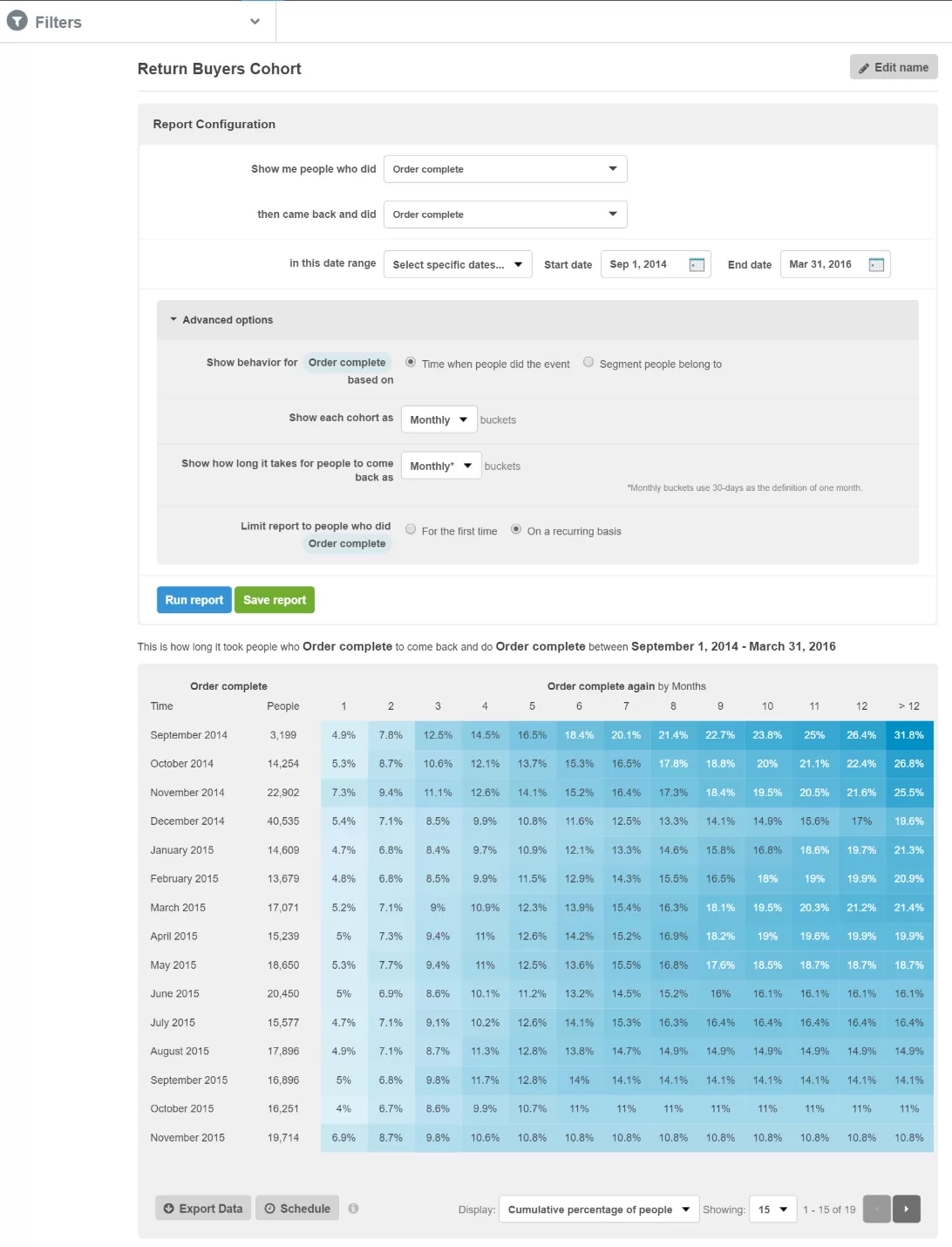By Chris Madden and Howie Zisser
Cross device tracking analytics have always been an elusive metric to track for marketers, but that is quickly changing with better understanding and improved tools.
Think about how many devices you use to log into your favorite apps or to search for something of interest – every single day.
If you’re the average consumer in the US, that number is 3.64 devices.
That could be your smartphone, your tablet, your work computer, and your home computer for good measure.
That’s a lot of devices for marketers to keep track of!
So what is cross device tracking?
Put simply, cross device tracking analytics focuses on people-based analytics as opposed to session-based analytics.
The goal of cross device analytics is to connect the activities from all your devices and track them back to one unique user, giving the marketer a fuller picture of how their company can help you.
Before Cross Device Tracking Analytics
In the dark ages, there was no way to track activity across devices – this resulted in attribution errors.
Using Pokemon as an example, this is what a marketer might see from you as you visit their site throughout the day from your various devices:
![]()
This will cause a ton of confusion, because the company thinks these actions are being taken by three distinct individuals.
New sale?! YES!….but where did it come from?
Without proper cross device analytics, a marketer will be led down the wrong path and could wind up missing opportunities.
This is known as session-based analytics. Each new device (or even browser!) triggers a new session,”Woohoo! New visitor,”, regardless that it’s actually coming from the same person.
Cross Device Tracking Analytics To The Rescue!
With new and better tools in place, we have closed the gap on cross device tracking.
Switching to people-based analytics will help you correctly attribute all actions, even across devices, back to one person:

Pretty cool, right?
Now the marketer knows that it was just Pikachu all along!
More importantly, you now have full insight into the path(s) the user took from first touch through final purchase and beyond.
Three Types of Cross Device Tracking
There are three main types to consider for your cross device analytics:
- The “Walled Garden”
- Deterministic
- Probabilistic
Cross device analytics tracking isn’t a one-size-fits-all kind of thing, so some of these will be more doable and accessible for you than others.
Your type of business and business goals will largely determine which of of these types is the best fit for you.
1) The Walled Garden – Facebook & Google Cross Device Tracking Analytics
Having a “walled garden” means you own the ecosystem.
Common traits for this are:
- A large install or visitor base
- The service is commonly used across multiple devices
- It has its own built-in analytics
- Ad platform is included
It’s hard to own the ecosystem, which is why this is the hardest one to duplicate.
The prime examples of this are Google and Facebook.
Facebook Cross-Device Analytics Walled Garden
People log into Facebook….a lot.
On an average day, a person may log in to see what their friends are griping about from 4 separate devices.
While scrolling through their Newsfeed, they might come across an ad

Without proper cross device analytics, you’ll see your ad having been served to 4 different people with a frequency of 1.
We know this is untrue.
This could cause all types of problems when gauging your ad performance.
With cross device analytics, we know the reality is that the ad has a reach of 1 with a frequency of 3.
Much different story now!
Google Cross-Device Tracking Walled Garden
Google’s version of the walled garden is a bit different than Facebook’s, but the end result remains the same: the ability to track user activities across multiple devices.
In order to accomplish this, you need to enable User-ID Feature in Google Analytics.
![]()
With this set up, Google will be able to retarget and attribute actions to the correct person, regardless of what device they’re using at the time of the action.
Additionally, Google allows for session unification.
According to Google,“Session unification allows hits collected before the User ID is assigned to be associated with an ID.”
So even if a person hasn’t been associated with a unique User ID yet, their past actions can still be linked and associated with them once they are associated with a User ID.
2) Deterministic Cross Device Tracking
Deterministic tends to involve a login, whereby the advertiser knows that a user is the same across devices because s/he is using the same email to login into an app on their phone and their tablet.
Deterministic tracking really takes the guesswork out of the process and ensure a high accuracy.
The more places the person logs into across devices, the more information the advertiser has in order to create value for them in all of the various contexts they might be viewing it in.
![]()
Deterministic matching is great for companies that have a large base of users. The downside of deterministic is that it’s not readily available for companies who have not yet achieved that scale.
Also your company may not have a natural reason for having your visitors login over time and across devices and browsers.
3) Probabilistic Cross Device Tracking
For companies that don’t have a large enough user base to take advantage of deterministic matching, we can turn to probabilistic matching.
This is also referred to as fingerprinting.
The probabilistic method uses anonymous data points to create a sort of digital pathway that a person uses. It then takes this digital pathway and inserts it into its algorithm to identify the probability that this pathway is unique to one user.
Note: this digital pathway is anonymous. The algorithm merely decides how common an exact pathway is and how likely it is to be attributed to just one person.
Some of the factors included in this analysis are:
- Wifi Network
- Location
- Device Type
- Operating System
- General Browsing Data
For example, think about your phone’s journey throughout a typical day.
How many other people are signed into your work’s Wifi Network and your home Wifi Network?
Not many, right?
So just those two data points can give the algorithms a high certainty of it being one individual.
If you want to check out your uniqueness for yourself, visit Am I Unique?
Here are my results:
![]()
So there you have it, I am special…just like my mom always said I was!
Why Cross Device Tracking?
This seems like an awful lot of work just to track people across devices, right?
Yes, but it’s well worth the time and energy in order to have improved long term business insights.
Cross device tracking analytics allows for companies to have a fuller picture of who their customers are.
That picture enables the companies to create more valuable content for them, tailored to how they typically consume said content on each device.
Furthermore, the company has better insights throughout the lifetime of a given customer – how their needs change, their expectations, their activity – and gives the company a chance to continually evolve to exceed their customer promise.
1) Cohort Analysis
According to KISSmetrics, “a cohort is a group of people who share a common characteristic or experience within a defined period of time.”
For example, running a cohort analysis can enable you to see how often and how many times a customer purchases in a given time period after their initial purchase.

You can take this a step further by comparing one cohort’s performance versus another one’s over a certain time period.
Say you want to see how much more frequently (or infrequently) the traffic from your Facebook Ads reorders than your general traffic.
This insight tells you how much to value the traffic driven from Facebook Ads and can also help you identify your most valuable channels, both in a present mindset and in a lifetime value mindset.
Lifetime value is really the endgame of all this. Knowing what a transaction is worth today pales in comparison to what that person can bring to your business over months, years, or any other reasonable scale of how long a person should remain a customer.
And without cross device tracking analytics, you don’t have a shot at truly understanding customer lifetime value.
2) Retention Analysis
Similar to cohorts, retention analysis enables you to see how certain segment behave over time.
A common way of looking at retention is through a user’s activity. How often do they use and engage with your app/website/etc?
The classic example is Facebook. Early on they learned that it was not about getting users signed up to Facebook; it was about getting users to login every single day and engage with Facebook.
So how exactly did they do that?
Through retention analysis they found that if a user got to 7 friends within 10 days, they were likely to be a Facebook user forever.
And they relentlessly focused on that from the moment a person signed up.
1.86 billion users later and it appears to have worked.
![]()
Everyone’s true north will vary, but the idea is to find that “hook” to keep your customers actively engaged with your company.
The above graph will look different depending on your type of business.
For example, Facebook needs users to come back at least on a weekly basis, if not daily. Any longer than that, they risk losing that user forever. They found that seeing your friends posts was the most compelling reason to keep coming back, and that’s how they eventually landed on the 7 friends number.
In contrast, an eCommerce company might only reasonably expect a customer to reorder every six months. Clearly they don’t need that person visiting the site every day, but with proper tracking and analysis they can better understand how to strategize their email marketing and retargeting campaigns.
So no matter what your version of the above graph looks like, you need cross device tracking to understand what goals you’re aiming for and you can strive to reach this ultimate insight.
What’s the Future of Cross Device Tracking Analytics?
As the tools continue to get better and more people adopt a Multi-Device Point of View, the data will transform from a rearview mirror to more predictive.
With more and more devices being connected, marketers will have a better understanding of who their customers are and what they need from the company – helping the marketer to create more valuable content for them at all stages of the customer’s lifecycle.
This improved tracking will also equip companies to better understand what marketing efforts are working and which one’s aren’t.
Using Facebook Ads as a testing ground is a great way to quickly gain these insights. And you can even target these ads at just the top 25% of website visitors to get a picture of your most engaged traffic.
![]()
With better cross device tracking analytics, there are also huge privacy implications.
It’s a subject that always makes people a bit skittish.
But we firmly believe that it will actually be a benefit for the consumer, because it will force companies to evolve and include ethical marketing in their outlooks.
As we see more and more ads across our web experiences, it will become clear as to which of those companies actually are serving their customers and which ones are merely just trying to make a buck.
Resources to Implement Cross Device Tracking
Large Companies/Advanced Needs:
Beginners/Small Companies:
Further Reading:




